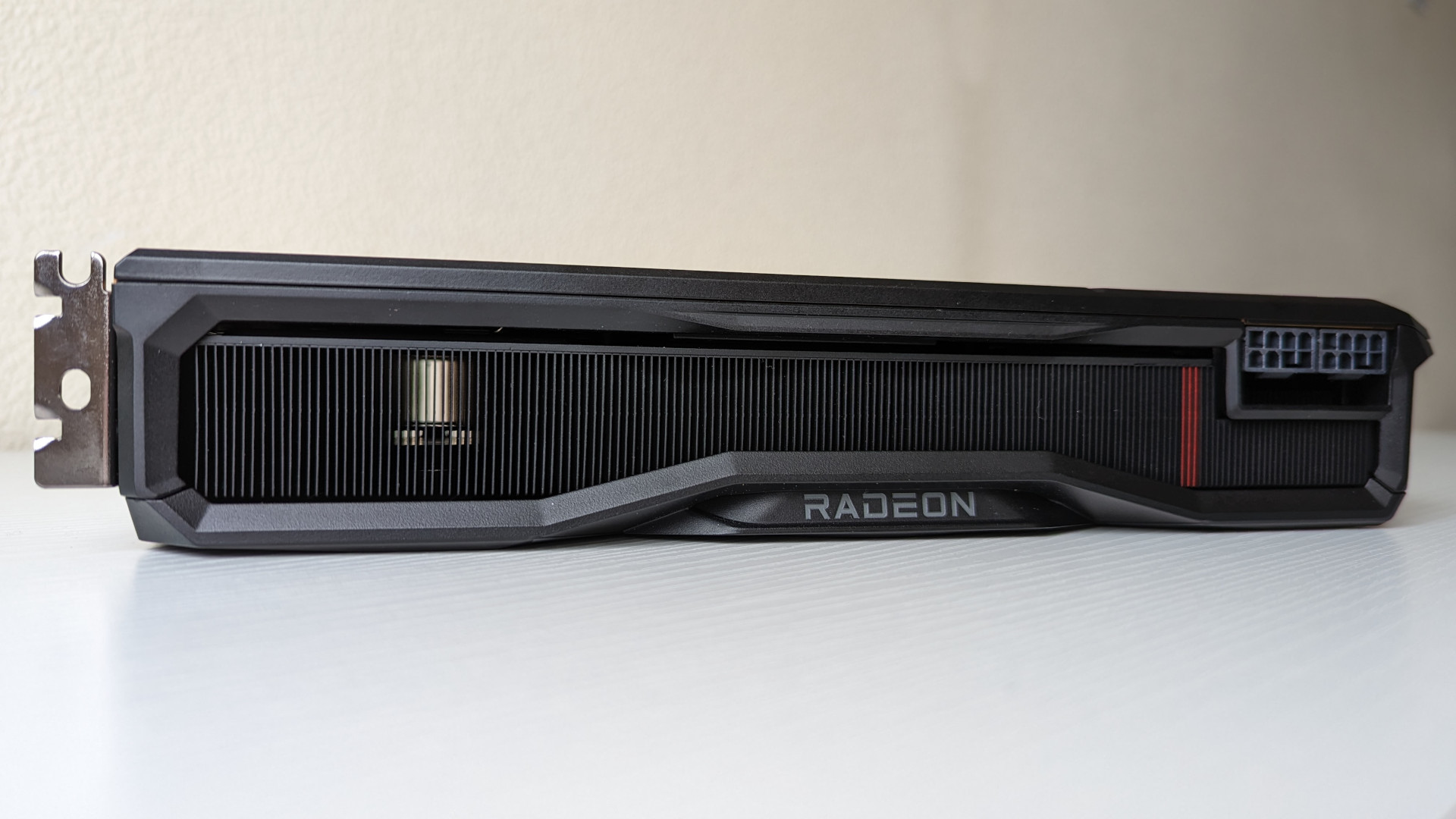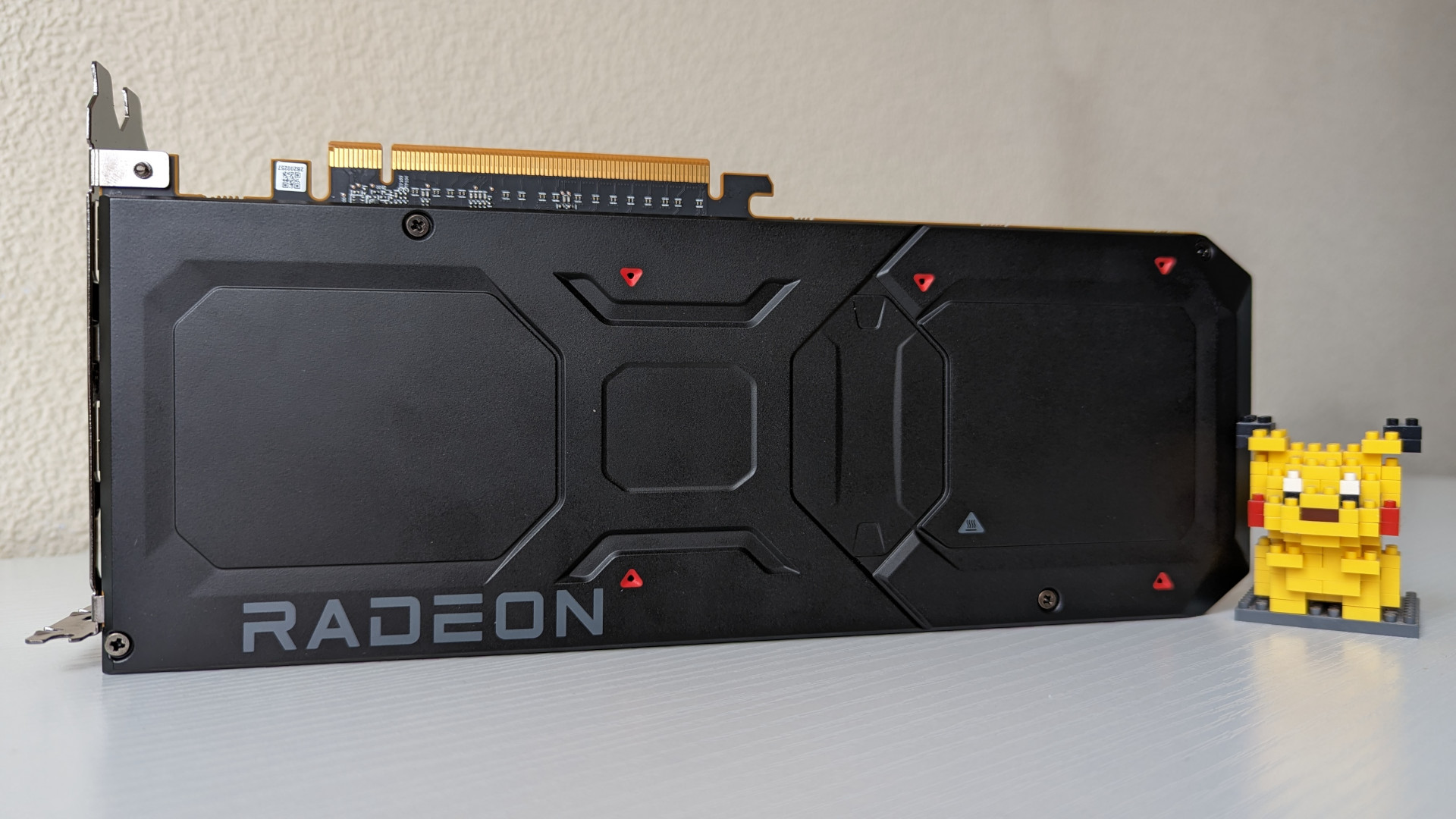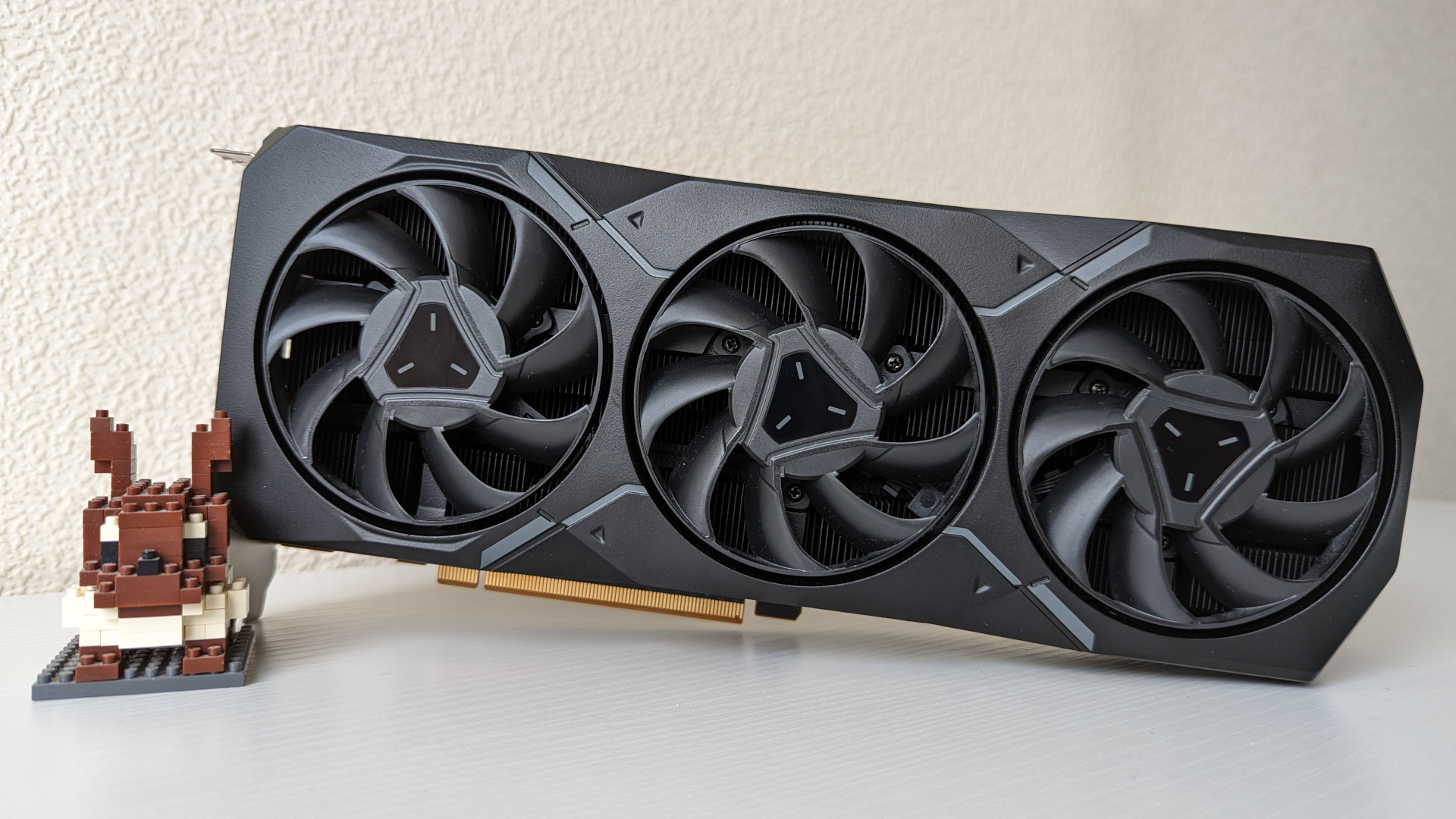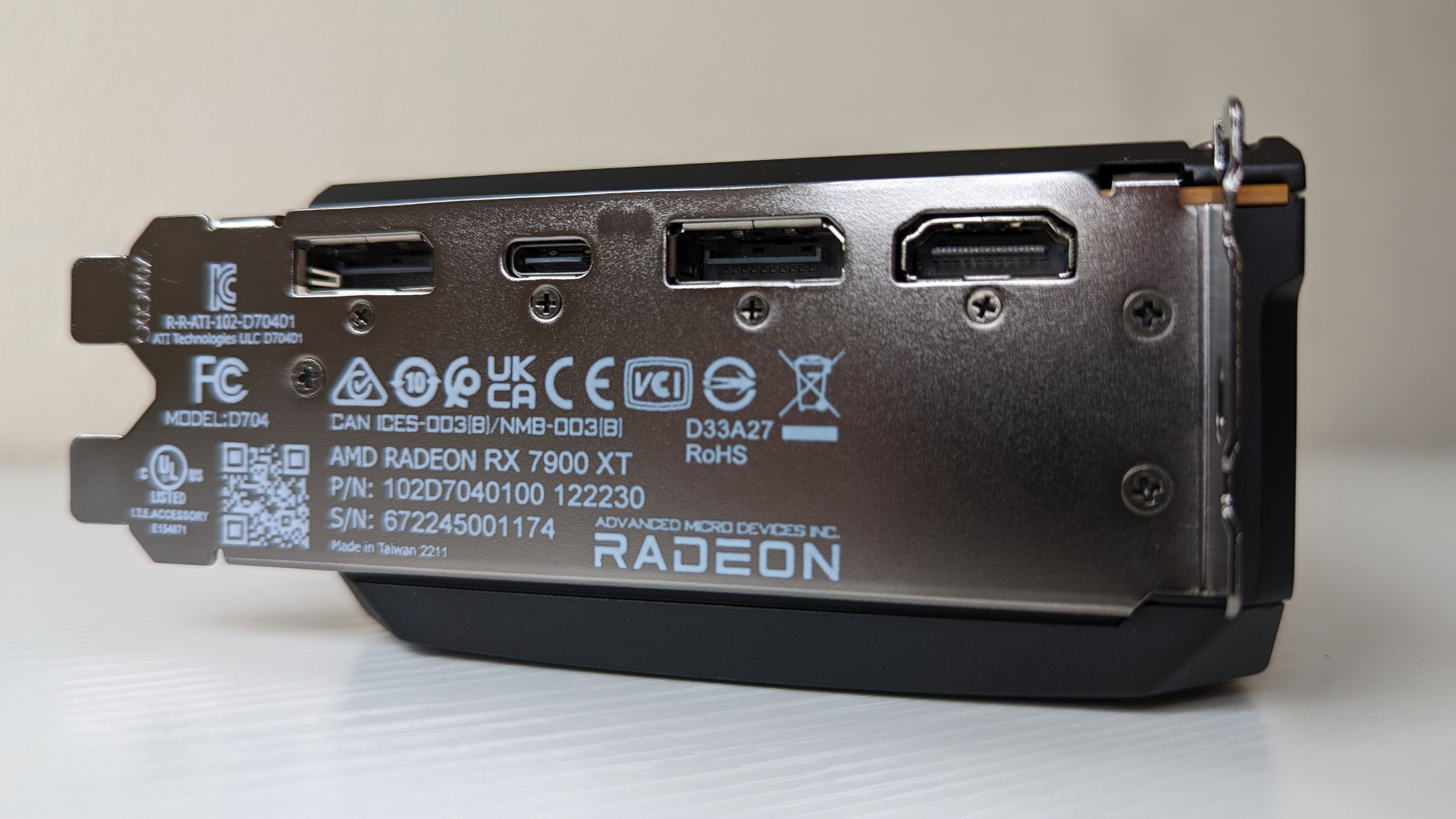The AMD Radeon RX 7900 XT aims to offer a slightly cheaper way to plug into the RDNA 3 GPU train. It has the same specs as its pricier sibling and offers significant performance improvements over its predecessor, including more powerful RT cores. . Unfortunately, there doesn’t seem to be a reason why you should choose this particular pixel pusher over the Radeon RX 7000 series alternatives and competing options.
It pains me to say this, but if the Radeon 7900 XT is anything to go by, we’ll have to wait a bit longer to see AMD deliver a Ryzen-style advance in the race for the best graphics card against its competitors. That’s not to say it’s a bad piece of equipment, far from it, but it’s by no means particularly attractive given its price.
To AMD’s credit, I’ve spent the last month driving the RX 7900 XT on a daily basis, and it’s proven to be a great and reliable companion in the many games I’ve run it on. Everything went well, be it driver stability, noise levels or temperatures.
Characteristics
Looking at the specs of the RX 7900 XT, it’s clear that this pixel-pushing processor is actually a streamlined version of its pricier sibling. It uses the same Navi 31 GPU, but includes fewer 2nd generation stream processors, compute units, and RT cores, as well as lower clock speeds. Although the XT uses the same GDDR6 video memory, it uses less, and memory bus width and clock speeds also lag behind the RX 7900 XTX.
| RX 7900 XT | HR 7900 HTX | HR 6900XT | |
| GPUs | Navi 31 (RDNA 3) | Navi 31 (RDNA 3) | Navi 21 (RDNA 2) |
| stream processors | 5376 | 6144 | 5120 |
| calculation units | 84 | 96 | 80 |
| RT core | 84 (second generation) | 96 (second generation) | 84 (first generation) |
| Basic Clock | 1385MHz | 1900MHz | 1815MHz |
| game clock | 2025MHz | 2300MHz | 2015MHz |
| speed up the clock | 2395MHz | 2500MHz | 2250MHz |
| video memory | 20 GB of GDDR6 memory | 24 DDR6 | 16GB of GDDR6 memory |
| tire width | 320 bit | 384 bit | 256 bit |
| DVT | 315W | 355W | 300W |
| MSRP/Suggested Retail Price | $899 / £899 | $999 / £999 | $999 / £999 |
All of these reductions mean it uses at least less power, but you’ll still need to pair it with a premium power supply. Its 315W TBP puts the RX 7900 XT just 5W behind the Nvidia GeForce RTX 4080 and shouldn’t be paired with a sub-750W PSU. You don’t have to pay for an ATX PSU though. 3.0 nor put up with the hassle of a clunky key, as it uses proven dual 8-pin connectors instead of the 16-pin connector you’ll find on RTX 4000 graphics cards.
AMD sang and danced about including DisplayPort 2.1 inputs on its Radeon RX 7000 series cards during the presentation, and you’ll find two on the 7900 XT along with a USB Type-C port and HDMI 2.1. In theory, this allows the GPU to support 4K monitors with refresh rates up to 480Hz and even 8K displays at 165Hz.
I say “theoretically” because the card is not capable of hitting those limits in most games, even with AMD FSR. This improvement is welcome from a future perspective, but I would prefer to see two HDMI 2.1 ports and one DP 2.1 port as the former is more useful in the here and now.
The RX 7900 XT is a beautifully equipped card that offers a few improvements over its predecessor, but it’s hard to ignore how close its specs are to the RX 7900 XTX since it’s only $100 between them. Usually a cheaper card should offer the best value, but I’d have to spend some time with the 7900 XTX to be sure.

Design
Those worried that the RX 7900 XT is yet another addition to the ever-growing lineup of behemoth graphics cards that began with the Nvidia GeForce RTX 4090 can breathe a sigh of relief. AMD’s dual-slot reference design is reasonably sized and should fit most ATX PC cases, and I think it would make a great addition to any build due to its low, almost industrial profile.
AMD is leaning more to the dark side with its 7900 XT color scheme, which is very reminiscent of the revamped set of 6000-series cards we saw last year. Take a closer look, though, and you’ll see that the “R” that once sat in the center of each of the three fans has been replaced with a more minimalist design.
There’s no trace of RGB on the 7900 XT, which is fine by me. The only patches of color you’ll find are a red stripe along the heatsink and on the back. Of course, everything I’ve described only applies to the reference design, so you should be able to fix your LED with the board partner boards. Just keep in mind that their coolers are likely to be much larger, approaching the size of the Nvidia GeForce RTX 4070 Ti and 4080.
For me personally, the RTX 4000 Founders Edition models are still the best when it comes to style, but the 7900 XT is no slouch. I only wish AMD and Nvidia had released white versions of their reference designs by now (c’mon guys).

Show
To test the RX 7900 XT at its own pace, I ran all of my tests at native 4K resolution, with the exception of my runs of Cyberpunk 2077, which uses AMD FSRs.
These are the characteristics of our test system:
- Operating System: Windows 11 Professional (22621.1105)
- Graphics processor: AMD Radeon RX 7900XT
- Motherboard: Asus TUF Gaming X670E-Plus
- Processor: AMD Ryzen 5 7600X
- RAM: Corsair Vengeance 32GB (2 x 16GB) DDR5 6000MHz
- SSD: SK Hynix Platinum P41 2TB
- Power supply: Corsair HX1200i
Even at 4K resolution, the 7900 XT can deliver seriously impressive frame rates. Its best result in our test suite is undoubtedly F1 22, with the GPU delivering an average frame rate of 188fps. Hitman 3 and Marvel’s Guardians of the Galaxy hit triple-digit performance, while Cyberpunk 2077 isn’t far behind at 97fps (although AMD FSR helps push things along).
Things get a little trickier when you look at Tiny Tina’s Wonderlands and Total War: Warhammer 3. The Borderlands spin-off runs at a respectable 70fps average, but the minimum frame rate almost hits 60 frames per second. Meanwhile, real-time gaming throttles RDNA 3 down to 62fps average, 46fps minimum.
We currently don’t have any 7900 XTX numbers to compare. However, these results can be compared to those of the 7900 XT’s main competitors: the Nvidia GeForce RTX 4080 and the RTX 4070 Ti. Where the Radeon shines the most is that it basically matches the 80-class GPU and can even beat it in some scenarios like Hitman 3. Sometimes it looks more like the cheaper RTX 4070 Ti in games like Tiny Tina’s Wonderlands and loses out in General War: Warhammer 3.
Unfortunately, as much wind as the 7900 XT has in its figurative sails against Nvidia’s offerings, Nvidia’s DLSS 3rd generation of frames is quickly toppled. AMD has announced a competitor for this technology, but for now its absence puts Radeon on the back burner in games that support the green team’s frame rate magic, and the list will only grow and lengthen.
To make matters worse, the ray tracing performance of the 7900 XT simply can’t keep up with all of Team Green’s current generation GPUs. Despite the higher capabilities of the second generation RT cores, the AMD card sits somewhere between the Nvidia GeForce RTX 3090 and the RTX 4070 Ti.
In all tests we’ve run, the 7900 XT falls short of the cheapest RTX 4000 currently available, and the performance gap naturally widens when Nvidia DLSS 3 Frame Generation comes into play. That looks even worse when you consider that the Radeon GPU starts at $899, while the RTX 4070 Ti can cost a bit more than the $799 MSRP and associated card models are at least $829.
To be clear, the performance offered by the 7900 XT is impressive in places, but AMD has yet to catch up with Nvidia when it comes to ray tracing. We hope that AMD FSR 3 will help bridge the gap when it arrives, but for now it seems that the red team is stuck in a secondary role.

Verdict
The AMD Radeon RX 7900 XT has many qualities worthy of a good graphics card, but its price is hard to justify when considered in the broader context of its competitors and siblings. At $899, your money is probably better spent buying an RTX 4070 Ti or paying $100 more for an RX 7900 XTX. Suffice it to say that this GPU needs a price drop.
We may see this narrative change once AMD FSR 3 arrives, and at this point, the Red team is well known for drastically improving the performance of their GPUs over time through driver updates. However, no one should buy anything based on speculation or promises, and the 7900 XT is no exception.
AMD Radeon RX 7900XT
The high raster performance is not enough to address the shortcomings of this GPU, including the insufficient frame rate of ray tracing and the lack of responsiveness to DLSS 3 Frame Generation.
Source : PC Gamesn

